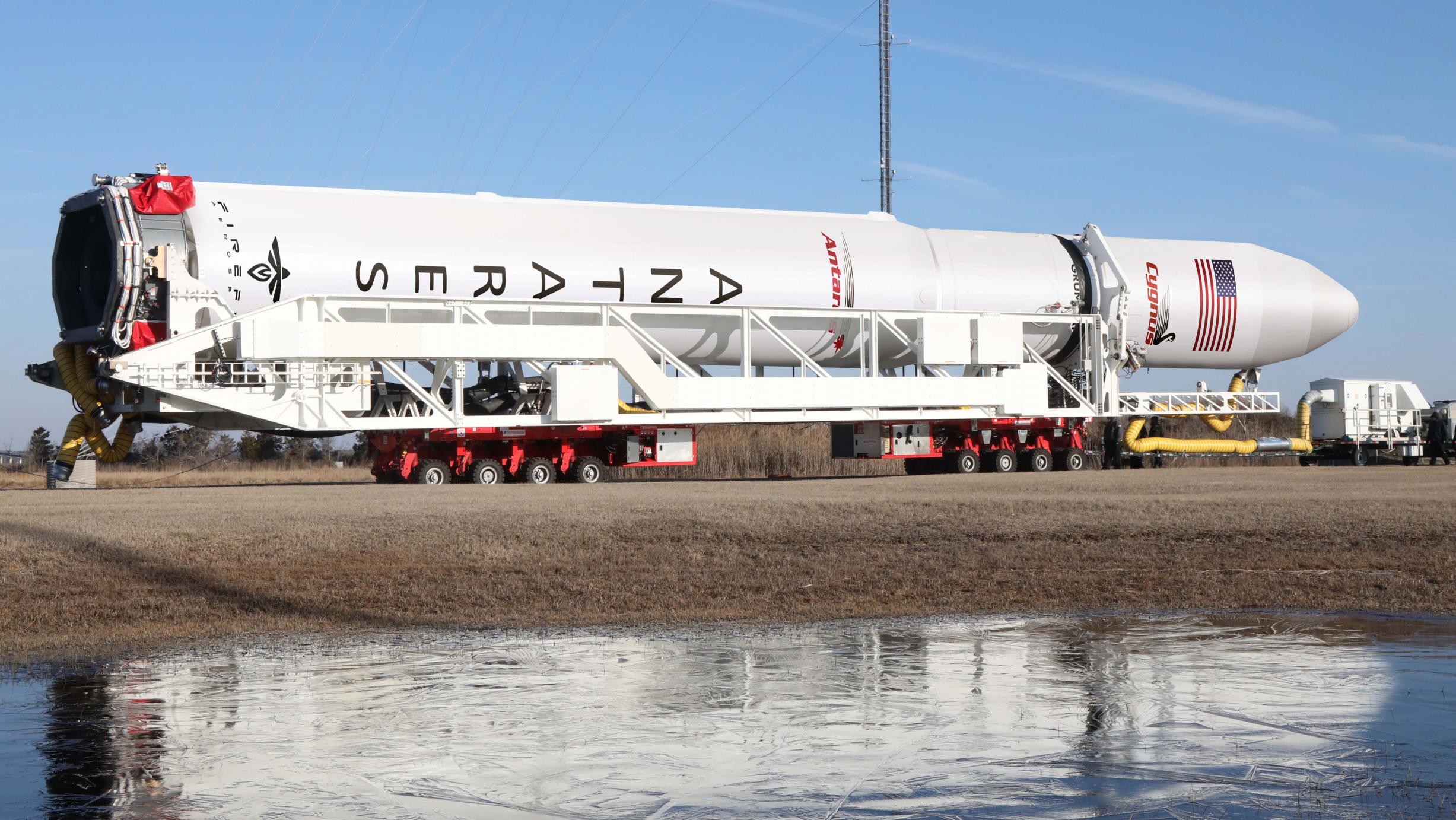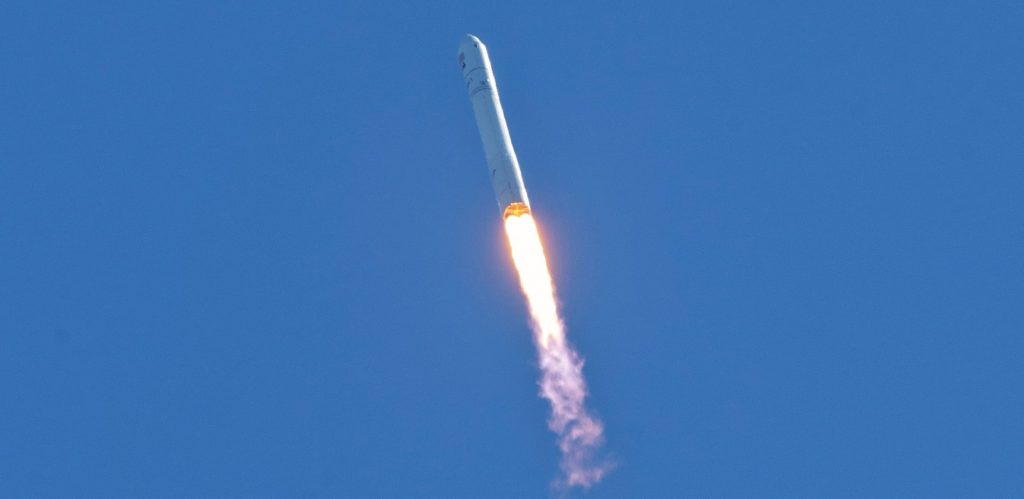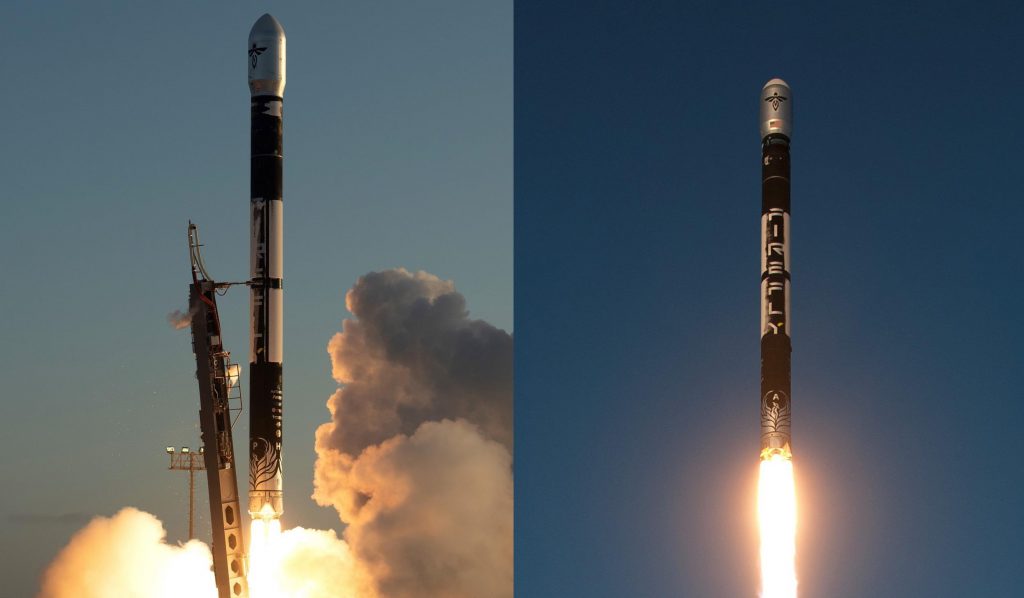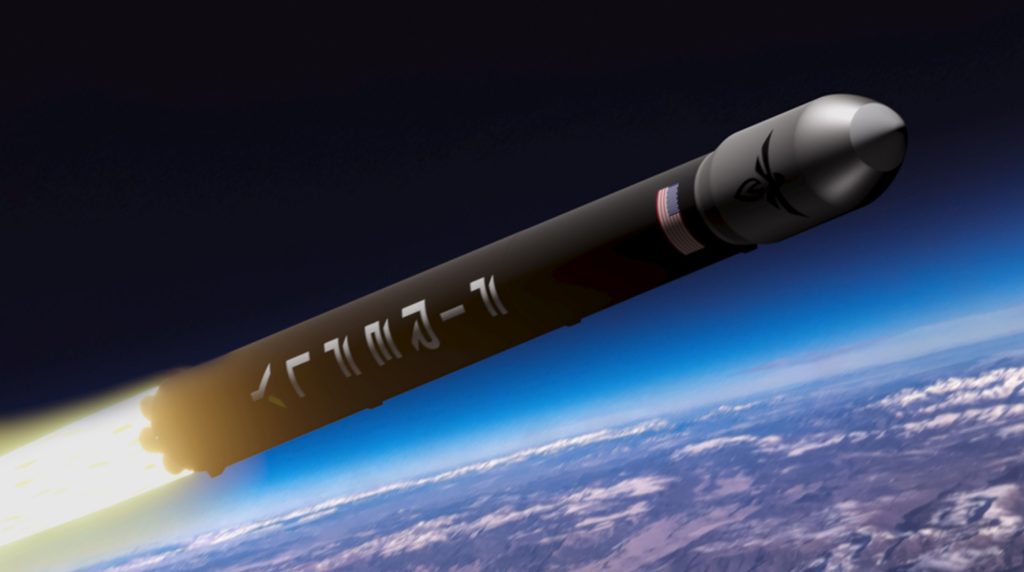

News
Northrop Grumman partners with Firefly and SpaceX to save Antares rocket, launch Cygnus spacecraft
Northrop Grumman has announced plans to partner with startup Firefly Aerospace to save (and upgrade) the conglomerate’s Antares rocket, which it uses to launch Cygnus cargo spacecraft to the International Space Station.
The new and improved Antares 330 rocket could debut as early as late 2024. The existing Antares 230 rocket has just two launches left before a lack of new hardware from crucial Ukrainian suppliers will permanently ground it – a time Northrop Grumman estimates will come as early as spring (Q2) 2023. To fill Antares’ 18-month availability gap, Northrop Grumman says it has purchased three SpaceX Falcon 9 launches to continue Cygnus space station cargo deliveries largely unabated.
In some ways, Northrop Grumman’s decision to purchase alternate launch services from SpaceX is surprising. After Antares suffered a catastrophic failure during an operational Cygnus launch in October 2014, Orbital Sciences chose to purchase three Atlas V launches from the United Launch Alliance (ULA) to ensure continued cargo deliveries while it attempted to return its own rocket to flight. Antares fully took over in 2017 after returning to flight in 2016.
However, seven or so years later, ULA is on the verge of retiring Atlas V and has already sold all remaining Atlas V launch contracts. Meanwhile, its next-generation Vulcan Centaur rocket is years behind schedule and unlikely to debut before 2023, making it extremely unlikely that ULA would have been able to fulfill Northrop Grumman’s desire to preserve its existing Cygnus launch schedule. It’s possible that Vulcan could have gotten the job done, but each Cygnus launch would have likely ended up several months (or more) behind schedule, thus requiring SpaceX and future provider Sierra Nevada Corporation to fill in the space station resource gaps Cygnus would leave.
With the benefit of hindsight and knowing that Antares 330 is unlikely to debut before late 2024 or 2025, it’s clear that SpaceX was the only viable option. Thanks to SpaceX operating in an entirely different universe of launch cadence and availability relative to the rest of the world, the company should have no issue whatsoever substituting a few of the dozens of Falcon 9 Starlink launches likely planned in 2023 and 2024 with Cygnus space station resupply runs.

Northrop Grumman’s decision comes almost four months after Russia’s second illegal invasion of Ukraine, an action that immediately threw the future of its Antares rocket into question. The only major components of Antares-Cygnus Northrop Grumman (through its 2018 acquisition of Orbital ATK) is responsible for building are the rocket’s Castor 30XL second stage and Cygnus’ service module. Cygnus’ silver pressure vessel is built by Thales Alenia Space, the payload fairing is built by RUAG, the Antares booster engines are supplied by Russia’s NPO Energomash, and the Antares booster structures are built by Ukraine’s Yuzhnoye SDO and Yuzhmash.
Now embroiled in an open shooting war begun by Russia, Ukraine’s aerospace industry has been on borrowed time for several months. In July, the Yuzhmash factory was reportedly struck by cruise missiles, killing several people and presumably damaging the facility. Northrop Grumman’s August 8th announcement that it US startup Firefly Aerospace will build a domestic replacement for the Antares first stage all but guarantees that its former Ukrainian partners are no longer able to supply rocket hardware.


The Antares 330 booster Firefly intends to build for Northrop Grumman will be substantially larger and “significantly increase” the rocket’s performance to low Earth orbit (LEO), which currently sits at 8 tons (~17,500 lb). Intriguingly, the booster Firefly will supply appears to be the latest iteration of the first stage of the medium-lift Beta rocket the startup has been working on for some time. According to Firefly’s recently updated Beta webpage, the next-generation rocket is expected to measure 4.32 meters (14.1 ft) wide and 55.7 meters (182.5 ft) tall; produce about 720 tons (1.6M lbf) of thrust in vacuum, and launch up to 13 tons (28,700 lb) to LEO.
News
Tesla Robotaxi has already surpassed Waymo in this key metric
Tesla Robotaxi has already overtaken Waymo in Austin in one key metric, but there’s still more work to do.

Tesla Robotaxi has already surpassed Waymo in one extremely important key metric: size of service area.
Tesla just expanded its service area in Austin on Monday morning, pushing the boundaries of its Robotaxi fleet in an interesting fashion with new capabilities to the north. Yes, we know what it looks like:
🚨 Tesla’s new Robotaxi geofence is…
Finish the sentence 🥸 pic.twitter.com/3bjhMqsRm5
— TESLARATI (@Teslarati) July 14, 2025
The expansion doubled Tesla Robotaxi’s potential travel locations, which now include the University of Texas at Austin, a school with over 53,000 students.
The doubling of the service area by Tesla has already made its travel area larger than Waymo’s, which launched driverless rides in October 2024. It became available to the public in March 2025.
According to Grok, the AI agent on X, Tesla Robotaxi’s current service area spans 42 square miles, which is five square miles larger than Waymo’s service area of 37 square miles.
Tesla Robotaxi (red) vs. Waymo geofence in Austin.
Much can be said about the shape… but the Robotaxi area is now ~3.9 mi² (10 km²) larger than Waymo’s!! pic.twitter.com/dVfh2ODxJC
— Robin (@xdNiBoR) July 14, 2025
The service area is one of the most important metrics in determining how much progress a self-driving ride-hailing service is making. Safety is the priority of any company operating a ride-hailing network, especially ones that are making it a point to use autonomy to deploy it.
However, these companies are essentially racing for a larger piece of the city or cities they are in. Waymo has expanded to several different regions around the United States, including Arizona and Los Angeles.
Tesla is attempting to do the same in the coming months as it has already filed paperwork in both California and Arizona to deploy its Robotaxi fleet in states across the U.S.
As the platform continues to show more prowess and accuracy in its operation, Tesla will begin to expand to new areas, eventually aiming for a global rollout of its self-driving service.
News
Tesla Megapacks arrive for massive battery replacing coal plant
Tesla Megapacks have started arriving on-site to the Stanwell Battery Project, just as Queensland prepares to wind down the Stanwell coal plant.

The first of over 300 Tesla Megapacks have arrived to the site of a massive battery energy storage system (BESS) being built in Australia, dubbed the Stanwell Battery Project after a coal plant it’s set to replace.
In a press release last week, the Stanwell Battery Project announced that the first Tesla Megapack 2XL units had arrived to the site, which is located outside of Rockhampton in Queensland, Australia. The project will eventually feature 324 Megapack units, set to arrive in the coming months, in order to support the 300MW/1,200MWh battery project.
“The Stanwell Battery is part of the diversification of our portfolio, to include cleaner and more flexible energy solutions,” said Angie Zahra, Stanwell Central Generation General Manager. “It is just one part of the 800 MW of battery energy storage capacity we have in our pipeline.
“Capable of discharging 300 MW of energy for up to four hours (1,200 MWh), our mega battery will be one of the largest in Queensland.”

Credit: Stanwell
Did you know Tesla’s Lathrop facility churns out a Megapack every 68 minutes? That’s enough energy to power 3,600 homes for an hour per unit! ⚡️ pic.twitter.com/bG6fpHkB9O
— TESLARATI (@Teslarati) June 11, 2025
READ MORE ON TESLA MEGAPACKS: Tesla Lathrop Megafactory celebrates massive Megapack battery milestone
The state is working with government-owned company Yurika to facilitate construction, and the process is expected to create roughly 80 jobs. The project is expected to come fully online in May 2027, with initial commissioning of the Megapacks aiming for November 2025.
The Stanwell Battery is set to replace the nearby Stanwell coal generation plant, which the government is planning to wind down starting in 2026 as part of efforts to reach an 80 percent renewable energy generation ratio by 2035. Meanwhile, the government is also set to begin winding down the Tarong and Callide coal plants, while several other Megapack projects are being built or coming online. o ya
Tesla currently has two Megapack production facilities, located in Lathrop, California, in the U.S. and another that came online earlier this year in Shanghai, China. The Shanghai Megafactory shipped its first units to Australia in March, while both factories are expected to be capable of producing 10,000 Megapack units per year upon reaching volume production.
News
The Tesla Diner is basically finished—here’s what it looks like
The company first broke ground on the Diner, Drive-in, and Supercharger location in September 2023. Now, it has served one of its first internal customers.

Tesla has finally completed the construction of its highly anticipated Diner, Drive-in, and Supercharger in Los Angeles, and recent photos of the interior’s “retro-futuristic” style are making their way around the internet.
X user Brad Goldberg shared photos from the Tesla Diner site last Tuesday, depicting some of the Supercharger stalls, indoor and outdoor seating areas, multiple neon lights, and even an Optimus robot. Goldberg also noted that there had been a “flurry of activity on site” while he was snapping the photos last week, suggesting that the restaurant location could be getting close to opening.
The Tesla Diner also served one of its first internal customers in the past few days, as Elon Musk posted on X on early Monday morning that he had just finished up eating a meal at the site:
I just had dinner at the retro-futuristic Tesla diner and Supercharger.
Team did great work making it one of the coolest spots in LA!
The photos also show that the site is pretty much done, with some of them even showing vehicles charging at the charging stalls.
You can see some of the latest photos of the Tesla Diner below.

Credit: BradGoldbergMD | X

Credit: BradGoldbergMD | X

Credit: BradGoldbergMD | X

Credit: BradGoldbergMD | X

Credit: TeslaKing420 | X

Credit: TeslaKing420 | X

Credit: Brad Goldberg (via Sawyer Merritt on X)

Credit: Brad Goldberg (via Sawyer Merritt on X)

Credit: Brad Goldberg (via Sawyer Merritt on X)

Credit: Brad Goldberg (via Sawyer Merritt on X)

Credit: Brad Goldberg (via Sawyer Merritt on X)
READ MORE ON TESLA’S LA DINER: Tesla readies Drive-In Diner Supercharger for launch with app inclusion
When will the Tesla Diner open to external customers?
While it’s still not open to external customers yet, the news again suggests that the company could be close to an official opening date. Tesla first broke ground on the Diner in September 2023, after receiving a wave of building permit approvals throughout that year. Teslarati also covered much of the construction progress throughout last year, including when crews installed the first and second drive-in screens.
Located at 7001 West Santa Monica Boulevard, the idea was first discussed in 2018 by Musk and a few others on Twitter, featuring 1950s rock and roll, waiters on roller skates, and drive-in movie theater screens playing clips from some of history’s best movies. Notably, the photos of the front doors also show that the site will be open 24 hours a day, 7 days a week, whenever it does end up opening.
Tesla’s progress on Supercharger with diner, drive-in seen in aerial footage
-

 Elon Musk2 weeks ago
Elon Musk2 weeks agoTesla investors will be shocked by Jim Cramer’s latest assessment
-

 News2 days ago
News2 days agoTesla debuts hands-free Grok AI with update 2025.26: What you need to know
-

 Elon Musk4 days ago
Elon Musk4 days agoxAI launches Grok 4 with new $300/month SuperGrok Heavy subscription
-

 Elon Musk6 days ago
Elon Musk6 days agoElon Musk confirms Grok 4 launch on July 9 with livestream event
-

 News1 week ago
News1 week agoTesla Model 3 ranks as the safest new car in Europe for 2025, per Euro NCAP tests
-

 Elon Musk2 weeks ago
Elon Musk2 weeks agoxAI’s Memphis data center receives air permit despite community criticism
-

 News4 days ago
News4 days agoTesla begins Robotaxi certification push in Arizona: report
-

 Elon Musk2 weeks ago
Elon Musk2 weeks agoTesla scrambles after Musk sidekick exit, CEO takes over sales



















